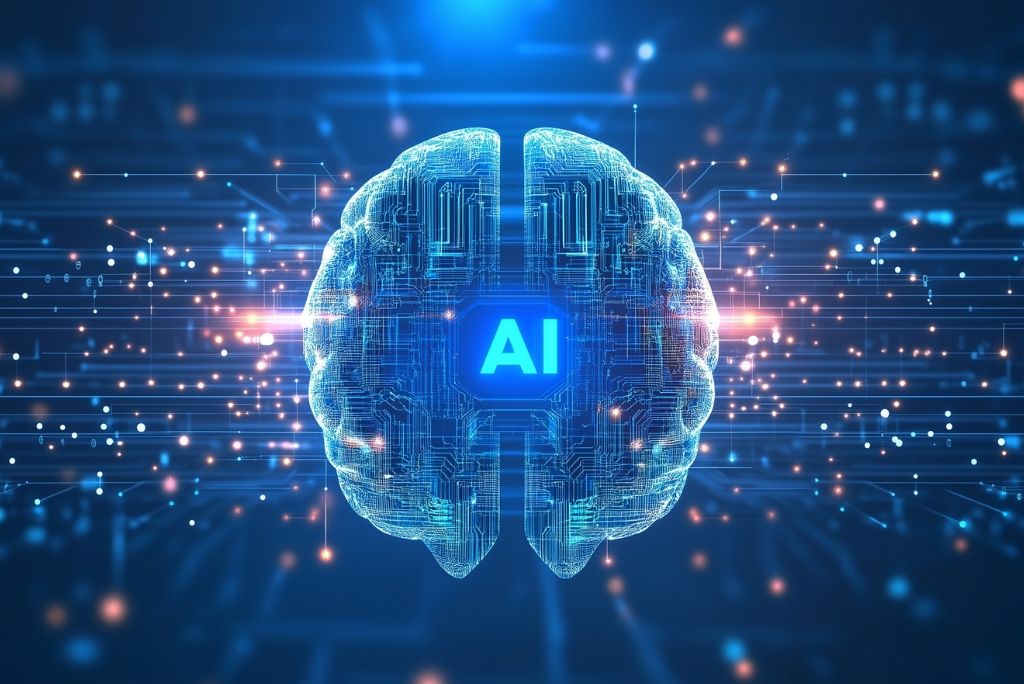We've been tracking the explosive increase of DeepSeek R1, which has actually taken the AI world by storm in current weeks. In this session, we dove deep into the evolution of the DeepSeek household - from the early models through DeepSeek V3 to the advancement R1. We also explored the technical developments that make R1 so special worldwide of open-source AI.
The DeepSeek Family Tree: From V3 to R1

DeepSeek isn't simply a single design; it's a household of increasingly advanced AI systems. The advancement goes something like this:
DeepSeek V2:
This was the foundation model which leveraged a mixture-of-experts architecture, where only a subset of specialists are used at reasoning, significantly improving the processing time for each token. It likewise included multi-head latent attention to reduce memory footprint.
DeepSeek V3:
This model introduced FP8 training techniques, which assisted drive down training costs by over 42.5% compared to previous iterations. FP8 is a less exact way to save weights inside the LLMs however can considerably enhance the memory footprint. However, training using FP8 can typically be unsteady, and it is tough to obtain the desired training outcomes. Nevertheless, DeepSeek uses several tricks and attains extremely steady FP8 training. V3 set the stage as an extremely efficient design that was already cost-efficient (with claims of being 90% cheaper than some closed-source alternatives).
DeepSeek R1-Zero:
With V3 as the base, the group then presented R1-Zero, the first reasoning-focused model. Here, the focus was on teaching the design not just to create answers however to "believe" before responding to. Using pure reinforcement knowing, the model was encouraged to create intermediate reasoning steps, for example, taking extra time (frequently 17+ seconds) to overcome an easy problem like "1 +1."
The essential innovation here was making use of group relative policy optimization (GROP). Instead of relying on a traditional process reward model (which would have required annotating every step of the thinking), systemcheck-wiki.de GROP compares numerous outputs from the model. By tasting several possible responses and scoring them (utilizing rule-based steps like specific match for mathematics or validating code outputs), the system finds out to prefer thinking that leads to the right result without the requirement for explicit guidance of every intermediate thought.
DeepSeek R1:
Recognizing that R1-Zero's without supervision technique produced reasoning outputs that might be hard to check out or even mix languages, the developers returned to the drawing board. They utilized the raw outputs from R1-Zero to produce "cold start" information and after that by hand curated these examples to filter and improve the quality of the reasoning. This human post-processing was then used to fine-tune the original DeepSeek V3 model further-combining both reasoning-oriented support knowing and supervised fine-tuning. The outcome is DeepSeek R1: a model that now produces readable, meaningful, and trustworthy thinking while still maintaining the efficiency and cost-effectiveness of its predecessors.
What Makes R1 Series Special?
The most remarkable element of R1 (zero) is how it developed reasoning abilities without specific guidance of the thinking process. It can be further improved by utilizing cold-start data and monitored reinforcement learning to produce legible reasoning on basic jobs. Here's what sets it apart:
Open Source & Efficiency:
R1 is open source, hb9lc.org enabling researchers and designers to check and build upon its developments. Its expense performance is a major selling point especially when compared to closed-source designs (claimed 90% cheaper than OpenAI) that require enormous compute spending plans.
Novel Training Approach:
Instead of relying exclusively on annotated thinking (which is both costly and time-consuming), the model was trained using an outcome-based method. It started with quickly verifiable jobs, such as math issues and coding exercises, where the correctness of the last answer could be quickly measured.
By using group relative policy optimization, the training process compares several created answers to identify which ones meet the desired output. This relative scoring system permits the design to discover "how to think" even when intermediate reasoning is created in a freestyle manner.
Overthinking?
An intriguing observation is that DeepSeek R1 in some cases "overthinks" easy problems. For instance, when asked "What is 1 +1?" it might spend nearly 17 seconds examining different scenarios-even considering binary representations-before concluding with the proper answer. This self-questioning and verification procedure, although it may seem ineffective in the beginning glimpse, might prove useful in complex tasks where deeper reasoning is needed.
Prompt Engineering:
Traditional few-shot prompting techniques, which have actually worked well for lots of chat-based designs, can in fact degrade efficiency with R1. The designers recommend using direct issue statements with a zero-shot method that defines the output format plainly. This guarantees that the model isn't led astray by extraneous examples or hints that might interfere with its internal thinking procedure.
Beginning with R1
For those aiming to experiment:
Smaller variants (7B-8B) can operate on consumer GPUs or even just CPUs
Larger variations (600B) need significant compute resources
Available through major cloud providers
Can be deployed in your area by means of Ollama or vLLM
Looking Ahead
We're particularly captivated by numerous implications:
The capacity for this technique to be used to other reasoning domains
Influence on agent-based AI systems traditionally developed on chat models
Possibilities for combining with other guidance techniques
Implications for enterprise AI implementation
Thanks for checking out Deep Random Thoughts! Subscribe free of charge to get new posts and support my work.
Open Questions
How will this impact the advancement of future reasoning models?
Can this technique be reached less verifiable domains?
What are the implications for multi-modal AI systems?
We'll be seeing these developments carefully, especially as the community starts to explore and build on these strategies.
Resources
Join our Slack community for ongoing discussions and updates about DeepSeek and other AI developments. We're seeing interesting applications already emerging from our bootcamp individuals working with these models.

Chat with DeepSeek:
https://www.deepseek.com/
Papers:
DeepSeek LLM
DeepSeek-V2
DeepSeek-V3
DeepSeek-R1
Blog Posts:
The Illustrated DeepSeek-R1
DeepSeek-R1 Paper Explained
DeepSeek R1 - a brief summary
Cloud Providers:
Nvidia
Together.ai
AWS
Q&A
Q1: Which design deserves more attention - DeepSeek or Qwen2.5 Max?
A: While Qwen2.5 is also a strong design in the open-source community, the choice ultimately depends upon your use case. DeepSeek R1 highlights advanced reasoning and a novel training method that might be specifically valuable in tasks where proven logic is important.
Q2: Why did major suppliers like OpenAI choose monitored fine-tuning rather than support knowing (RL) like DeepSeek?
A: We ought to note in advance that they do utilize RL at the minimum in the type of RLHF. It is highly likely that designs from significant service providers that have thinking capabilities currently utilize something comparable to what DeepSeek has done here, however we can't make certain. It is likewise most likely that due to access to more resources, they favored supervised fine-tuning due to its stability and the prepared availability of large annotated datasets. Reinforcement knowing, although effective, can be less foreseeable and more difficult to control. DeepSeek's method innovates by using RL in a reasoning-oriented manner, making it possible for the model to find out reliable internal thinking with only minimal procedure annotation - a method that has shown promising regardless of its complexity.
Q3: Did DeepSeek use test-time calculate methods similar to those of OpenAI?
A: DeepSeek R1's style highlights performance by leveraging techniques such as the mixture-of-experts method, which activates just a subset of parameters, to decrease calculate throughout reasoning. This concentrate on efficiency is main to its cost benefits.
Q4: What is the difference between R1-Zero and R1?
A: R1-Zero is the preliminary model that discovers thinking entirely through reinforcement learning without specific procedure supervision. It generates intermediate thinking steps that, while sometimes raw or blended in language, serve as the foundation for learning. DeepSeek R1, on the other hand, refines these outputs through human post-processing and supervised fine-tuning. In essence, R1-Zero offers the unsupervised "spark," and R1 is the refined, more meaningful version.
Q5: How can one remain updated with in-depth, technical research while handling a hectic schedule?
A: Remaining current includes a mix of actively engaging with the research neighborhood (like AISC - see link to sign up with slack above), following preprint servers like arXiv, going to appropriate conferences and webinars, and taking part in conversation groups and newsletters. Continuous engagement with online neighborhoods and collaborative research jobs also plays a key function in keeping up with technical developments.
Q6: In what use-cases does DeepSeek outshine models like O1?
A: The short response is that it's too early to tell. DeepSeek R1's strength, nevertheless, depends on its robust reasoning capabilities and its efficiency. It is especially well matched for jobs that require verifiable logic-such as mathematical problem resolving, code generation, and structured decision-making-where intermediate reasoning can be evaluated and verified. Its open-source nature further allows for tailored applications in research and business settings.
Q7: What are the implications of DeepSeek R1 for enterprises and start-ups?

A: The open-source and affordable design of DeepSeek R1 reduces the entry barrier for deploying advanced language designs. Enterprises and start-ups can utilize its sophisticated thinking for agentic applications ranging from automated code generation and client support to information analysis. Its flexible implementation options-on consumer hardware for smaller designs or cloud platforms for larger ones-make it an attractive option to proprietary options.
Q8: Will the design get stuck in a loop of "overthinking" if no proper response is discovered?
A: While DeepSeek R1 has been observed to "overthink" simple problems by exploring numerous reasoning courses, it includes stopping requirements and engel-und-waisen.de assessment mechanisms to prevent infinite loops. The support discovering framework motivates merging towards a proven output, even in uncertain cases.
Q9: Is DeepSeek V3 totally open source, and is it based upon the Qwen architecture?
A: Yes, DeepSeek V3 is open source and worked as the structure for later versions. It is developed on its own set of innovations-including the mixture-of-experts technique and FP8 training-and bio.rogstecnologia.com.br is not based on the Qwen architecture. Its style emphasizes effectiveness and expense reduction, setting the stage for the reasoning innovations seen in R1.
Q10: bytes-the-dust.com How does DeepSeek R1 perform on vision jobs?
A: DeepSeek R1 is a text-based design and does not integrate vision abilities. Its style and training focus entirely on language processing and reasoning.
Q11: Can experts in specialized fields (for example, labs dealing with remedies) apply these approaches to train domain-specific models?
A: Yes. The innovations behind DeepSeek R1-such as its outcome-based reasoning training and effective architecture-can be adapted to various domains. Researchers in fields like biomedical sciences can tailor these techniques to develop models that resolve their specific difficulties while gaining from lower calculate expenses and robust thinking capabilities. It is most likely that in deeply specialized fields, however, there will still be a need for supervised fine-tuning to get dependable results.
Q12: Were the annotators for the human post-processing specialists in technical fields like computer technology or mathematics?
A: The discussion suggested that the annotators mainly focused on domains where correctness is easily verifiable-such as mathematics and coding. This suggests that know-how in technical fields was certainly leveraged to guarantee the precision and clearness of the reasoning data.
Q13: Could the design get things incorrect if it relies on its own outputs for finding out?
A: While the model is developed to enhance for proper responses by means of reinforcement learning, there is always a risk of errors-especially in uncertain situations. However, by examining numerous candidate outputs and enhancing those that cause proven results, the training procedure minimizes the likelihood of propagating incorrect reasoning.
Q14: How are hallucinations decreased in the model given its iterative reasoning loops?
A: Making use of rule-based, verifiable jobs (such as mathematics and coding) helps anchor the design's thinking. By comparing multiple outputs and utilizing group relative policy optimization to enhance just those that yield the right result, the model is assisted far from producing unfounded or hallucinated details.
Q15: Does the model depend on complex vector mathematics?
A: Yes, advanced techniques-including complex vector math-are essential to the application of mixture-of-experts and attention mechanisms in DeepSeek R1. However, the main focus is on using these methods to enable efficient reasoning rather than showcasing mathematical intricacy for its own sake.
Q16: Some fret that the model's "thinking" might not be as fine-tuned as human reasoning. Is that a legitimate concern?
A: Early models like R1-Zero did produce raw and in some cases hard-to-read thinking. However, the subsequent improvement process-where human specialists curated and gratisafhalen.be enhanced the reasoning data-has significantly enhanced the clarity and reliability of DeepSeek R1's internal idea process. While it remains a progressing system, iterative training and feedback have actually resulted in significant improvements.
Q17: Which model variants are ideal for local deployment on a laptop computer with 32GB of RAM?
A: For regional testing, a medium-sized model-typically in the variety of 7B to 8B parameters-is suggested. Larger models (for example, those with hundreds of billions of specifications) require substantially more computational resources and are better fit for cloud-based deployment.
Q18: Is DeepSeek R1 "open source" or does it offer only open weights?
A: DeepSeek R1 is offered with open weights, suggesting that its design criteria are publicly available. This aligns with the overall open-source approach, permitting scientists and developers to further explore and build upon its innovations.
Q19: What would happen if the order of training were reversed-starting with supervised fine-tuning before without supervision reinforcement knowing?
A: The existing technique permits the model to first check out and produce its own thinking patterns through unsupervised RL, and after that improve these patterns with monitored techniques. Reversing the order may constrain the design's capability to discover diverse reasoning courses, disgaeawiki.info potentially restricting its general efficiency in jobs that gain from autonomous idea.
Thanks for reading Deep Random Thoughts! Subscribe totally free to receive new posts and support my work.








